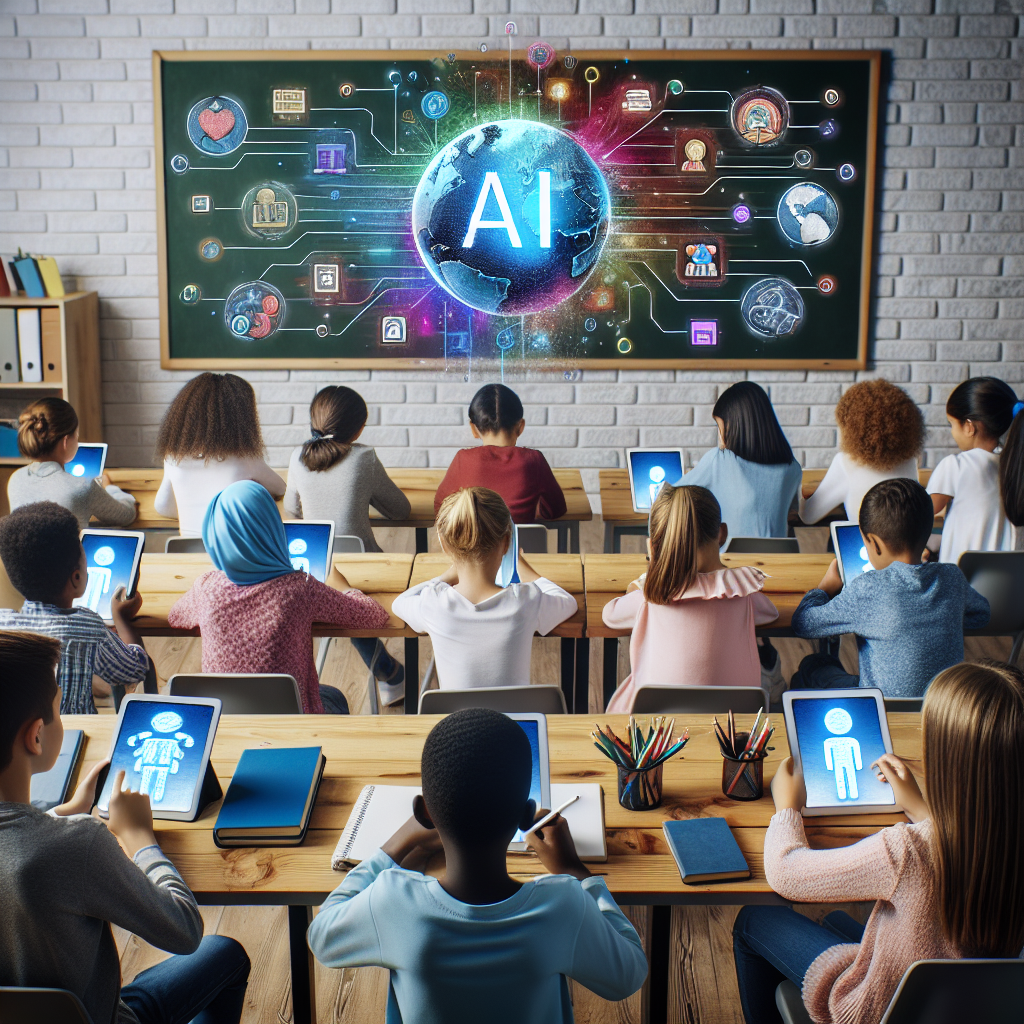Student-centered learning has gained significant attention in recent years as educators strive to create more engaging and personalized learning experiences for their students. This approach puts the student at the center of the learning process, allowing them to take ownership of their education and pursue their interests and goals in a more meaningful way.
One of the key challenges in implementing student-centered learning is providing students with the support and resources they need to succeed. This is where AI-powered collaboration tools come in. These tools leverage artificial intelligence to facilitate communication, collaboration, and personalized learning experiences, making it easier for students to work together, share ideas, and engage with course material in a more interactive and dynamic way.
AI-powered collaboration tools can enhance student-centered learning in a variety of ways. Here are some of the key benefits of using these tools in the classroom:
1. Personalized learning experiences: AI-powered collaboration tools can analyze student data and provide personalized recommendations for learning resources, activities, and assessments based on each student’s individual needs and learning style. This allows students to focus on the areas where they need the most support and guidance, leading to more meaningful and effective learning experiences.
2. Enhanced communication and collaboration: AI-powered collaboration tools can facilitate communication and collaboration among students, teachers, and peers, making it easier for students to work together on projects, share ideas, and provide feedback in real-time. This promotes a more interactive and engaging learning environment, where students can learn from each other and collaborate on shared goals and objectives.
3. Instant feedback and assessment: AI-powered collaboration tools can provide instant feedback and assessment on student work, allowing students to track their progress, identify areas for improvement, and receive timely feedback from teachers and peers. This promotes a more responsive and supportive learning environment, where students can take ownership of their learning and make continuous improvements based on real-time feedback.
4. Adaptive learning pathways: AI-powered collaboration tools can create adaptive learning pathways for students, guiding them through personalized learning experiences based on their individual strengths, weaknesses, and goals. This allows students to progress at their own pace and focus on the areas where they need the most support, leading to a more personalized and effective learning experience.
5. Data-driven insights: AI-powered collaboration tools can analyze student data and provide teachers with valuable insights into student performance, engagement, and learning progress. This allows teachers to identify trends, patterns, and areas for improvement, enabling them to tailor their teaching strategies and interventions to meet the needs of their students more effectively.
Overall, AI-powered collaboration tools can enhance student-centered learning by providing students with the support, resources, and personalized learning experiences they need to succeed. These tools can facilitate communication, collaboration, and feedback, promote personalized learning pathways, and provide valuable insights into student performance and progress, leading to a more engaging and effective learning environment for students.
FAQs:
1. What are AI-powered collaboration tools?
AI-powered collaboration tools are software applications that leverage artificial intelligence to facilitate communication, collaboration, and personalized learning experiences among students, teachers, and peers. These tools analyze student data, provide personalized recommendations, facilitate real-time communication and feedback, and create adaptive learning pathways for students, enhancing student-centered learning in the classroom.
2. How can AI-powered collaboration tools enhance student-centered learning?
AI-powered collaboration tools can enhance student-centered learning by providing students with personalized learning experiences, enhanced communication and collaboration opportunities, instant feedback and assessment, adaptive learning pathways, and data-driven insights into student performance and progress. These tools enable students to take ownership of their learning, work together on projects, receive timely feedback, and progress at their own pace, leading to a more engaging and effective learning environment.
3. What are the key benefits of using AI-powered collaboration tools in the classroom?
Some of the key benefits of using AI-powered collaboration tools in the classroom include personalized learning experiences, enhanced communication and collaboration opportunities, instant feedback and assessment, adaptive learning pathways, and data-driven insights into student performance and progress. These tools can facilitate a more interactive and dynamic learning environment, where students can work together, share ideas, and engage with course material in a more personalized and effective way.
4. How can teachers integrate AI-powered collaboration tools into their teaching practice?
Teachers can integrate AI-powered collaboration tools into their teaching practice by incorporating these tools into their lesson plans, providing students with access to these tools for communication, collaboration, and feedback, and using the data and insights generated by these tools to inform their teaching strategies and interventions. By leveraging AI-powered collaboration tools, teachers can create a more personalized and engaging learning environment for their students, promoting student-centered learning and enhancing student success.
In conclusion, AI-powered collaboration tools have the potential to revolutionize student-centered learning by providing students with the support, resources, and personalized learning experiences they need to succeed. These tools can facilitate communication, collaboration, and feedback, promote personalized learning pathways, and provide valuable insights into student performance and progress, leading to a more engaging and effective learning environment for students. By leveraging AI-powered collaboration tools, educators can create a more interactive and dynamic learning environment that empowers students to take ownership of their education and pursue their goals and interests in a more meaningful way.

